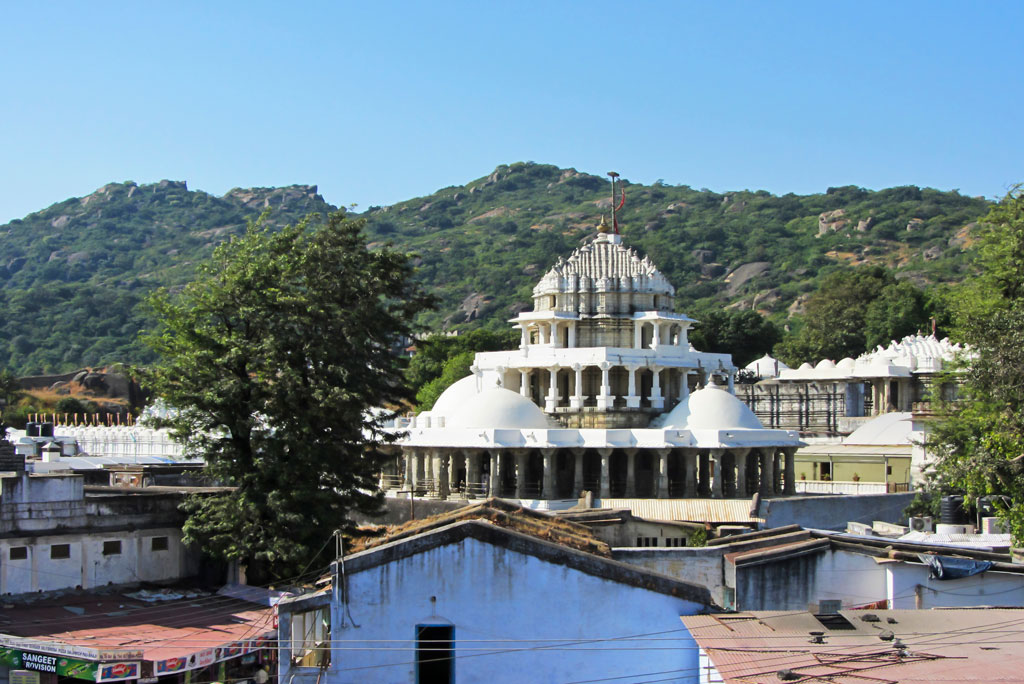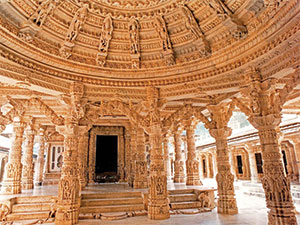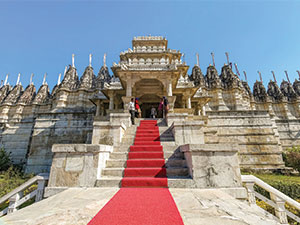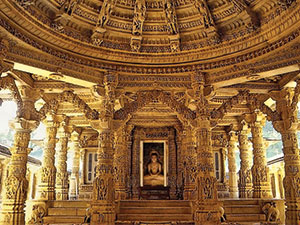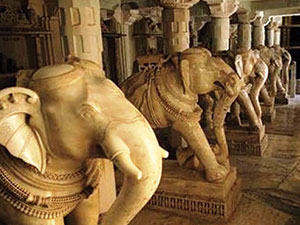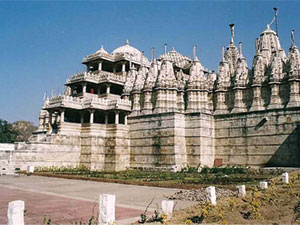The Dilwara Temples or Delvada Temples are a group of Śvētāmbara Jain temples located about 2+1⁄2 kilometres from the Mount Abu settlement in Sirohi District, Rajasthan’s only hill station. The earliest were built by Bhima I and supposedly designed or at least financed by Vastupala, Jain minister of Dholka. They date between the 11th and 16th centuries, forming some of the most famous monuments in the style of Māru-Gurjara architecture, famous for their use of a very pure white marble and intricate marble carvings. They are managed by Seth Shri Kalyanji Anandji Pedhi, Sirohi and are a pilgrimage place for Jains, and a significant general tourist attraction. The Dilwara temples are regarded as the most impressive among Jain temples in Rajasthan.
The five Dilwara temples are among the most famous Jain temples. The Vimal Vasahi is much the earliest, constructed by 1031, with the Luna Vasahi by 1230, and the others at intervals between 1459 and 1582. All are in white marble which adds greatly to their effect and remains in use. The oldest and largest two have large amounts of intricate carving even by the standards of the style, reaching a peak in the Luna Vasahi temple. The main buildings of the first three named are surrounded by “cloister” screens of devakulikā shrines, and are fairly plain on the outer walls of these; in the case of the Vimal Vasahi this screen was a later addition, around the time of the second temple. These three have an axis from the sanctuary through a closed, then an open mandapa to an open rangamandapa, or larger hall for dance or drama. Surrounding the main temple with a curtain of shrines was to become a distinctive feature of the Jain temples of West India, still employed in some modern temples.
In later temples in the Māru-Gurjara style, a very pure white marble like that at Dilwara came to be regarded as highly desirable, even essential. In modern times, when the style has become popular in other regions of India, and with Hindu and Jain communities in other countries, local Rajastani marble is often carved and transported to the new building.
The temples have an opulent entranceway, the simplicity in architecture reflecting Jain values like honesty and frugality. The ornamental detail spreading over the minutely carved ceilings, doorways, pillars, and panels is considered to be remarkable. It is said that workmen were paid in gold according to the weight of marble powder scraped off.

